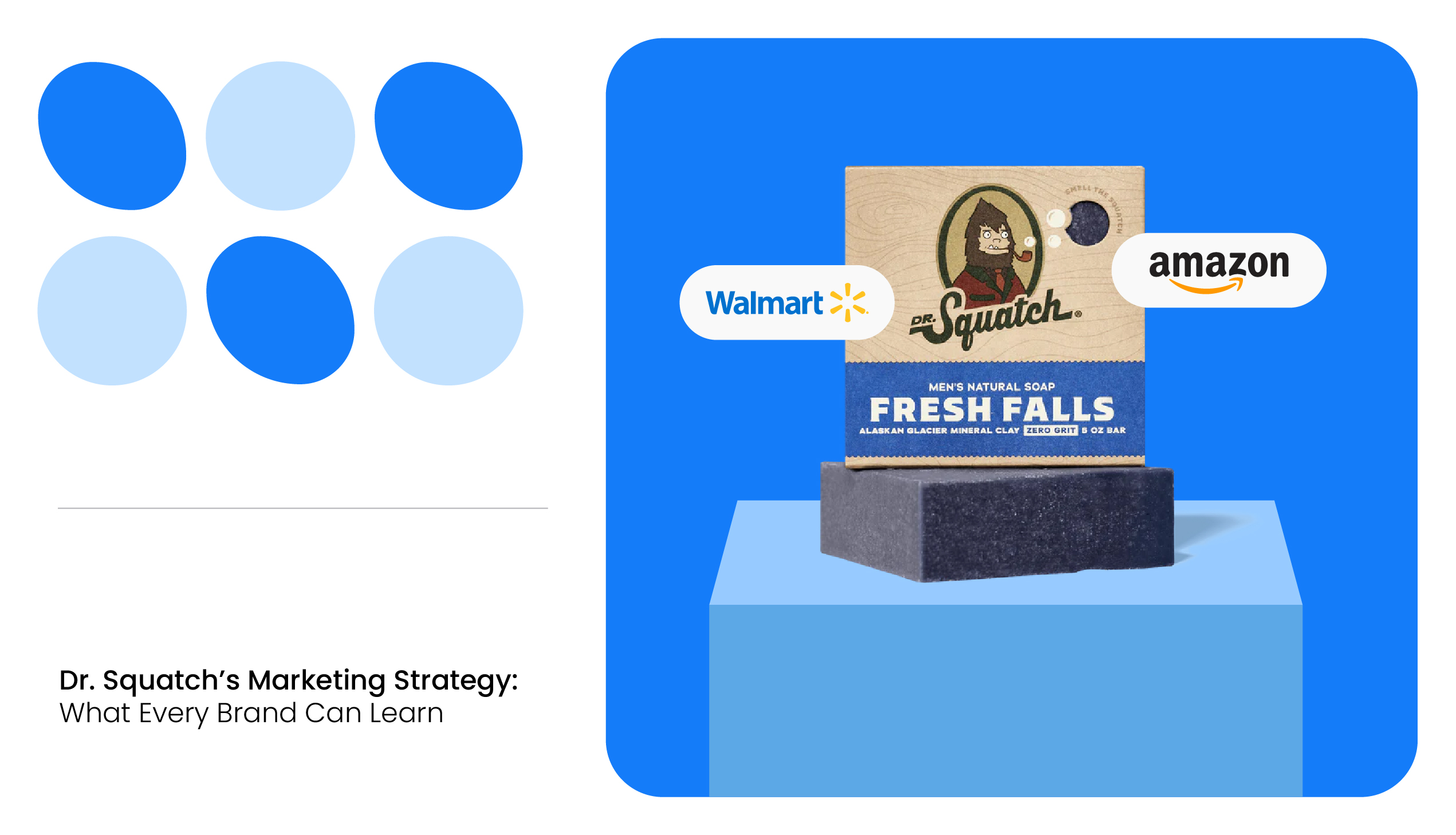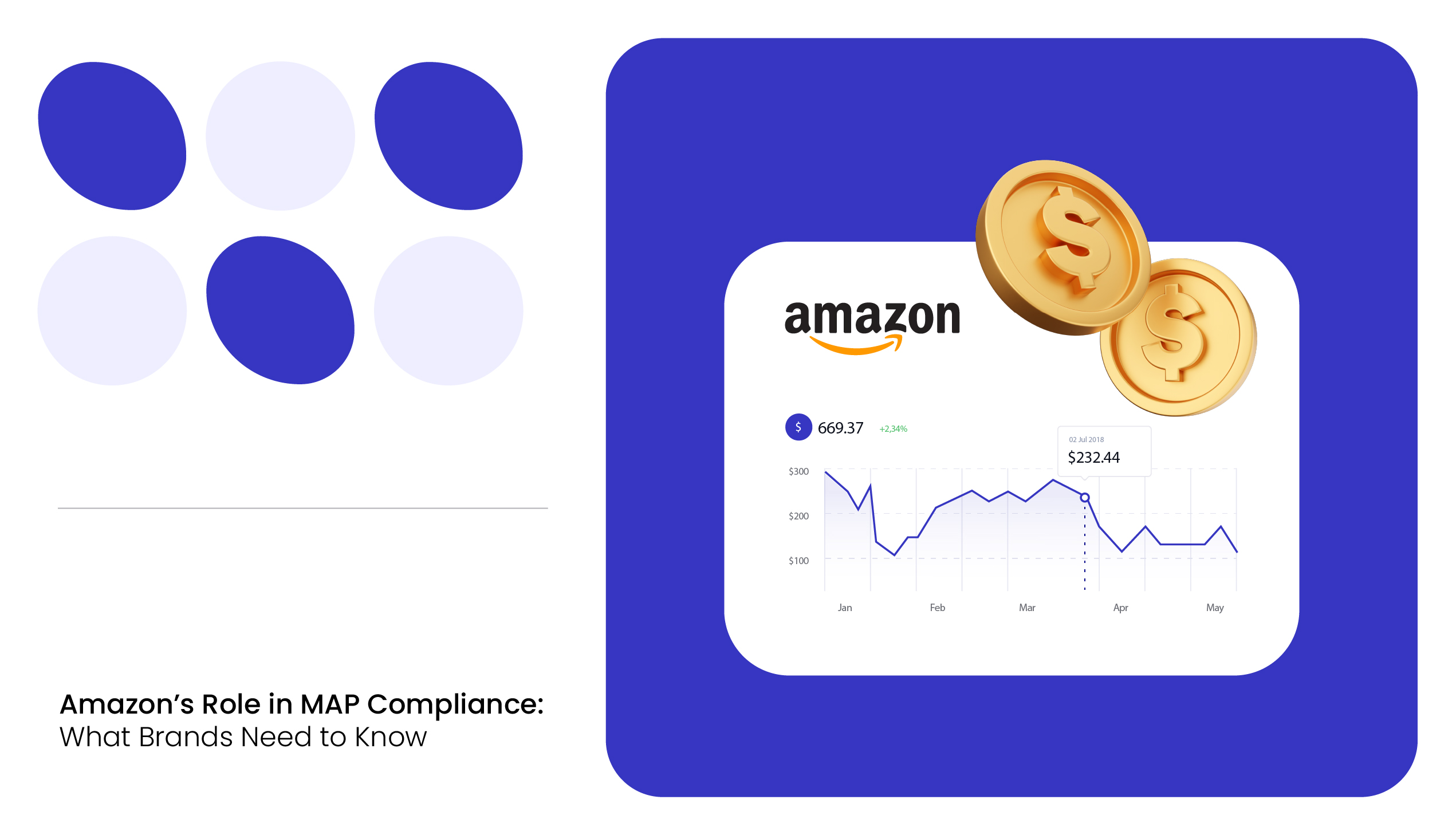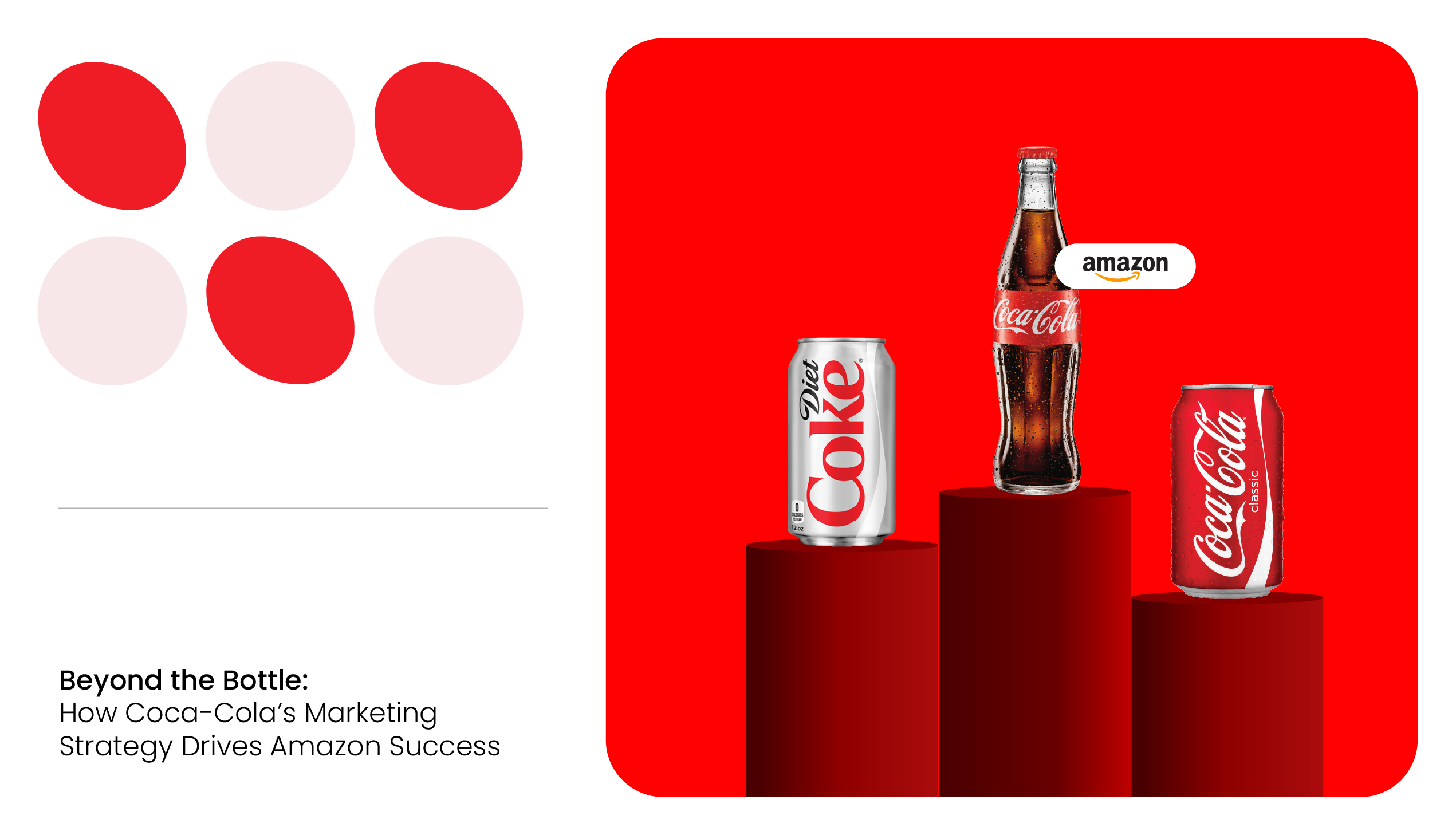When Unilever announced it was spending $1.5 billion to acquire Dr. Squatch, the CPG industry was in shock. Why spend so much on such a primary product when brands like Dove and Lux are already household names?
While it looked unnecessary on the surface, Unilever wasn’t throwing the ball in the dark. It was a strategic decision, capitalizing on the cult following Dr. Squatch has built over the years through its brilliant marketing strategy.
In this report, we take a closer look at Dr. Squatch’s marketing strategy to understand what makes it work. Using data captured from Amazon and Walmart on July 31, 2025, we analyze how the brand positions itself across channels and what lessons other companies can draw from its approach.
Dr. Squatch’s Marketing Strategy: An Overview
Dr. Squatch is one of those rare brands that managed to make the boring interesting. Instead of selling soap as a commodity, Dr. Squatch positioned it as a badge of masculine identity: Rugged, manly, and unapologetically different.
On the marketing front, the brand started with simple Facebook ads and farmers’ markets, and eventually pivoted to YouTube ads. In 2018, their YouTube ad, “You’re not a dish, you’re a man,” went viral, garnering more than 120M views, which in turn converted into sales.
From there, Dr. Squatch continued to adapt bold, out-of-the-box viral marketing stunts, such as the “Ball Care” ad featuring Nick Cannon and partnering with celebrities like Sydney Sweeney.
Alongside these viral wins, Dr. Squatch has also been deliberate about its digital shelf presence. They follow a careful platform-specific strategy on the digital shelf that balances reach with premium positioning, laying the foundation for its success across retailers.
The Digital Shelf Play: Amazon vs. Walmart
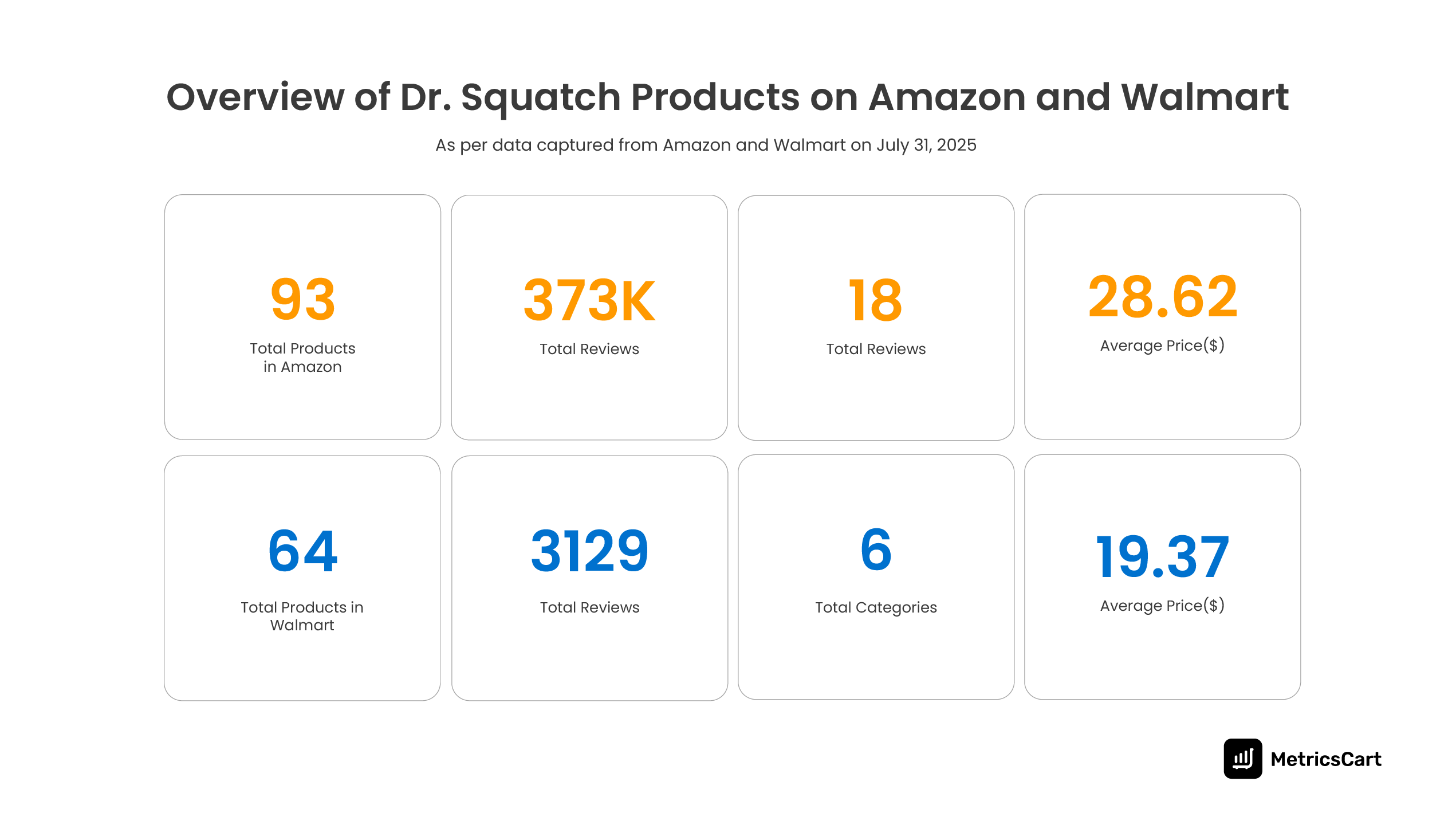
Dr. Squatch doesn’t take a one-size-fits-all approach on the digital shelf. Instead, its digital shelf strategy is tailored to match the audience preferences on each platform.
Amazon is treated as a premium showcase, while Walmart serves as the gateway for everyday essentials. This careful segregation of Dr. Squatch products on Amazon and Walmart allows the brand to expand its reach without diluting its identity.
READ MORE | Walmart vs. Amazon: Which Online Marketplace is Better For Sellers?
Dr. Squatch’s marketing strategy on Amazon
Looking into Dr. Squatch’s marketing strategy on Amazon, as of July 31, 2025, the brand lists 93 products across 18 categories. Most of these products lean into the premium category, with the most expensive product being Dr. Squatch Natural Hand and Body Lotion for Men – Made with Shea Butter, followed by bundles.
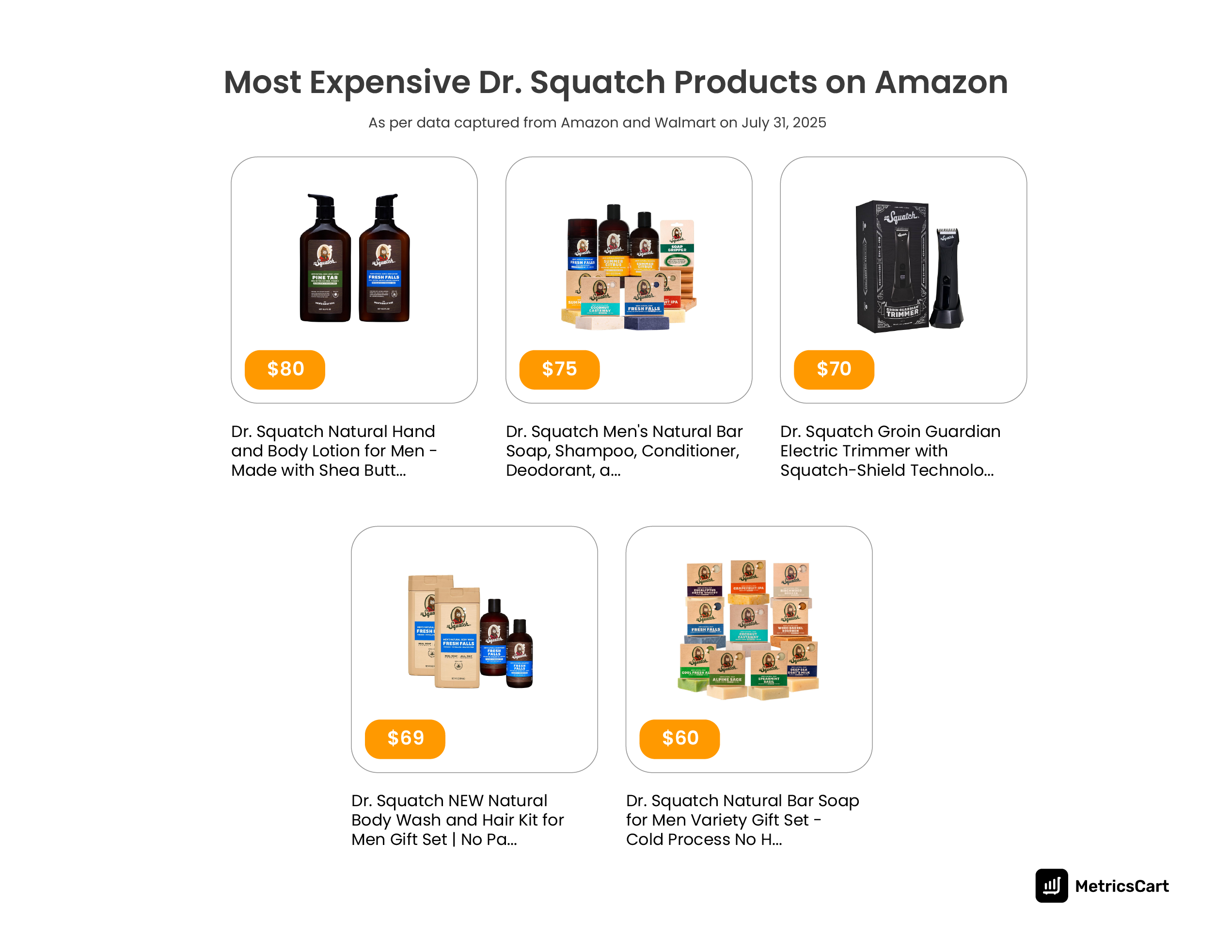
Amazon listings heavily feature multi-product kits and bundles. Bar soap plus shampoo, deodorant, and face wash, often priced above $60. This strategy increases the average order value (AOV) while reducing customer churn, as bundled items encourage the trial of multiple products within the line.
Interestingly, none of the Dr. Squatch listings on Amazon are sponsored, showing that the brand relies on organic traction and brand loyalty rather than heavy ad spend.
READ MORE | What’s Brewing on Amazon: A Data Deep Dive into Non-Alcoholic Beverages
Dr. Squatch’s marketing strategy on Walmart
Dr. Squatch’s business model on Walmart is focused on affordability and accessibility, with bar soaps and bundles dominating the lineup. The most affordable items, like lip balm and bar soap singles on Walmart, are aimed at price-sensitive shoppers on the platform.
The most expensive Walmart listings tend to be bundle packs of bar soaps or basic bath essentials, not premium grooming kits.
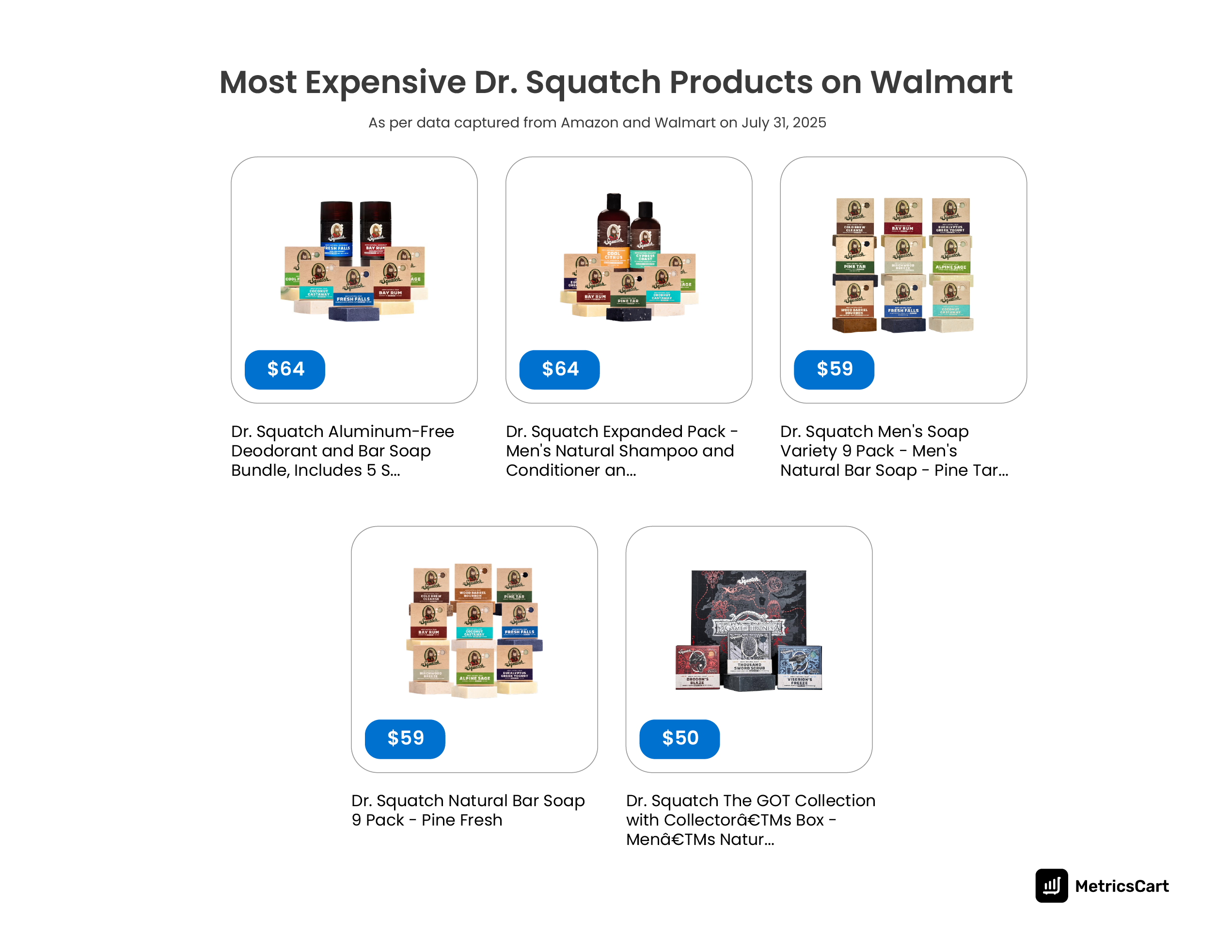
At Walmart, Dr. Squatch also experiments more with nature-inspired and fresh scents, such as Starfruit, Spearmint Basil, and Bayberry, broadening its appeal among everyday consumers who may be trying the brand for the first time.
Retail Expansion Without Dilution
Expanding from direct-to-consumer into retail can easily blur a brand’s positioning, but Dr. Squatch has managed to avoid that. The brand uses data-driven choices to separate its premium identity from its mass appeal.
Dr. Squatch on Amazon carries more products at higher average prices than Walmart. The catalog includes premium grooming bundles and themed gift sets that appeal to loyal fans.
For example, Body Lotion for Men is the most expensive product on Amazon, and grooming bundles dominate the premium tier. Amazon also showcases unique fragrances such as Pine, Coconut, and other one-off blends, adding variety that reinforces the brand’s lifestyle appeal.
At Walmart, the strategy shifts to affordability. Bar soaps dominate the lineup, both as singles and bundles, making them the entry point for price-sensitive shoppers.
The cheapest listings include lip balm and individual bar soaps, while even Walmart’s most expensive items remain soap bundles or basic bath essentials. Scents are broader and more experimental here, with fresh and citrus profiles like Starfruit, Spearmint Basil, and Bayberry that extend appeal to casual buyers.
READ MORE | Insights Into the Online Beauty & Personal Care Industry in the US
Product Strategy: Small-Batch Meets Subscription
Dr. Squatch on Amazon and Walmart shows that product strategy is not just about what you sell but how you frame it. By emphasizing small-batch quality and natural ingredients, the brand turned a basic commodity into a differentiated offering. Limited-edition scents and themed bundles keep the catalog fresh, while evergreen staples like bar soaps provide consistency across retailers
The real strength lies in pairing this with a subscription model. Instead of fighting for one-off purchases, Dr. Squatch built recurring revenue and stronger customer retention by making essentials part of a subscription routine.
This approach balances premium pricing power on Amazon with broad accessibility on Walmart, proving that brands can scale both margin and reach when product design and distribution work hand in hand.
Social Proof and Community
Even with the biggest celebrity endorsing your brand, if customer reviews do not back up that trust, you will fail on the digital shelf. Dr. Squatch has managed to avoid that trap by building strong credibility through reviews. On both Amazon and Walmart, natural bar soaps attract the highest number of reviews, making them the foundation of the brand’s reputation.
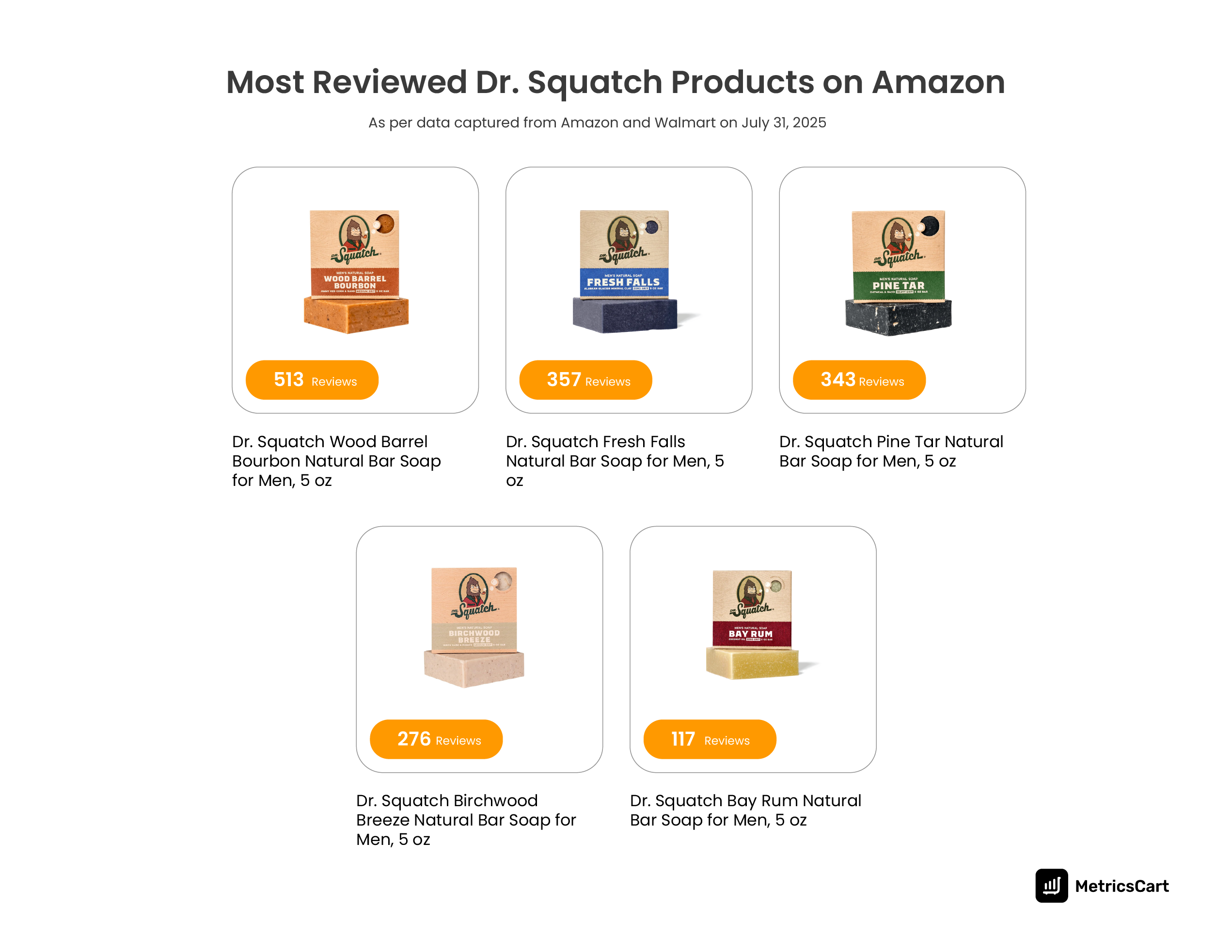 Amazon collects more reviews overall, despite having a product range that is only slightly larger than Walmart’s. Popular scents like Pine and Coconut consistently stand out, while unique blends keep the catalog fresh.
Amazon collects more reviews overall, despite having a product range that is only slightly larger than Walmart’s. Popular scents like Pine and Coconut consistently stand out, while unique blends keep the catalog fresh.
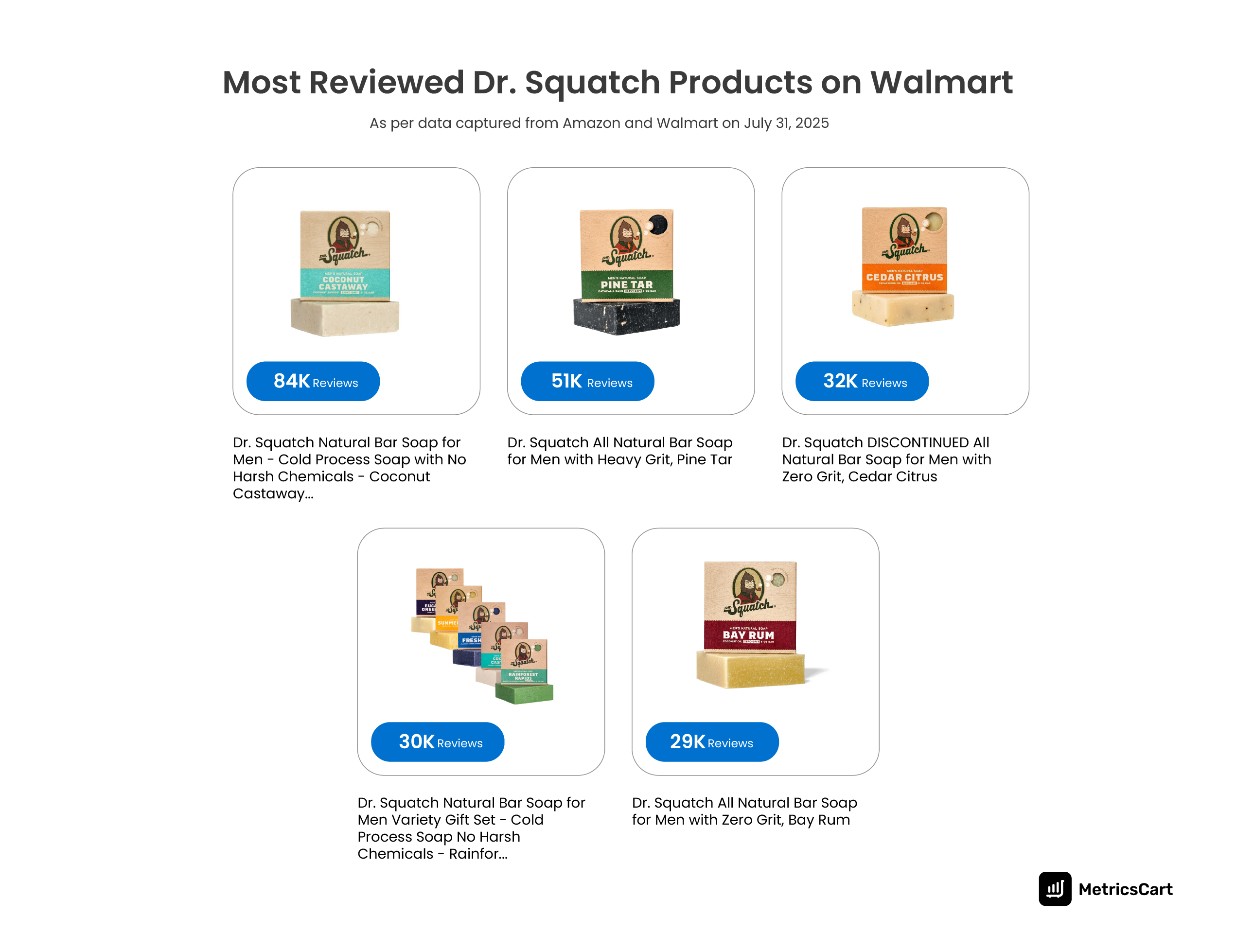
On Walmart, reviews are centered on bar soaps and deodorants, showing how the platform works as a starting point for new buyers who want affordable essentials.
By driving real feedback around its core products, Dr. Squatch has built trust that complements its viral campaigns and celebrity tie-ins. This focus on authentic customer voice has helped the brand grow beyond the hype and sustain its community.
READ MORE | Digital Shelf Insights: Amazon Best Sellers in the Beauty & Personal Care Category
The Dr. Squatch Playbook
Dr. Squatch proves that success in CPG is not just about going viral. It comes from consistent, data-driven decisions across products, pricing, and platforms. The brand built a clear identity, tailored its presence for Amazon and Walmart, and combined creative marketing with real customer feedback to earn trust and loyalty.
For CPG companies, here’s the playbook:
- Build a strong brand identity that connects emotionally with your target audience.
- Use platform-specific strategies to balance premium positioning and mass accessibility.
- Pair creative marketing campaigns with real customer feedback to build trust.
- Offer product bundles and subscription models to drive recurring revenue.
- Use data-driven insights to optimize product positioning, pricing, and digital shelf performance.
If you’re looking to replicate the growth of Dr. Squatch, tools like MetricsCart make it easier to track product performance, monitor reviews, and optimize your digital shelf strategy. By using insights from the tool effectively, you can grow reach, retain customers, and maintain a strong brand identity just like Dr. Squatch.
Disclaimer: MetricsCart is the exclusive owner of the data used in the Digital Shelf Insights reports. Any kind of third-party usage entails due credit to the source material.
Want Complete Visibility into Your Digital Shelf Performance?

